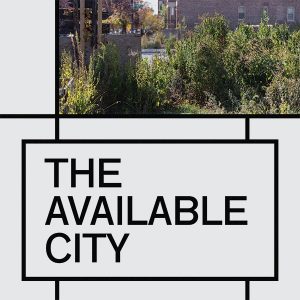The fourth edition of the Chicago Architecture Biennial (CAB) will open to the public on September 17, responding to an urban design framework that proposes connecting community residents, architects, and designers to develop and create spaces that reflect the needs of communities and neighborhoods. Over 80 contributors from more than 18 countries will respond to this framework through site-specific architectural projects, exhibitions, and programs across eight neighborhoods in Chicago and in the digital sphere.
Curated by the Biennial’s 2021 Artistic Director—designer, researcher, and educator David Brown—The Available City will present projects and programs that ask and respond to the question of who gets to participate in the design of the city by exploring new perspectives and approaches to policies. The Available City illuminates the potential for immediate new possibilities, highlights improvisational organizers of the city, and underscores the exponential impact of small elements in aggregate. The Biennial is free and open to the public beginning on Friday, September 17. It will be on view at sites and in locations throughout the city, activated through in-person and online programming through December 18, 2021.
More than 80 contributors from around the world
The projects in The Available City will bring ideas for collective spaces to life through built projects, exhibitions, essays, workshops, and programs that activate neighborhood sites in ways that will engage and enhance the community experience. These explorations include:
Site-specific architectural projects: 15 of the Biennial’s commissioned projects are installations on public and private lots located in Chicago’s neighborhoods of North Lawndale, Bronzeville, Woodlawn, Englewood, Pilsen, and the South Loop. For many of these projects, Artistic Director David Brown engaged mission-driven community organizations or groups across the city, pairing them with an architect whose practice he believed was aligned with the organization’s intentions for a space, expanding upon the work these organizations were already doing to engage their community. Examples of site-specific projects include:
- Two projects on the Westside Association for Community Action (WACA) Playlot, Bell Park, were the outcome of a community workshop facilitated by Open Architecture Chicago and Freedom House with David Brown to envision the transformation of a vacant 15-block stretch under the Chicago Transit Authority Pink Line train. One of the projects in Bell Park comprises a central architectural installation designed to mimic the look and feel of the blow-up bounce houses that are staples of block parties around the country by Studio Barnes (Miami, FL), in collaboration with Shawhin Roudbari (Boulder, CO) and MAS Context (Chicago, IL); the other is an architectural-scale urban painting by Outpost Office (Columbus, OH) on the ground of the lot, which is produced with GPS-guided robots ordinarily used to paint temporary sports
- On 63rd between University and Woodlawn in the Woodlawn neighborhood of Chicago, Matri-Archi(tecture) will present Reflecting Our (Global) South Side, which creates a circular outdoor meeting space with canopies and seating to provides shade and shelter for congregation, referencing the rich value of radial community planning, historically designed by communities in Sub-Saharan
- At the former Overton Elementary School in Bronzeville, which is the site of the Overton Incubator for entrepreneurship in business, technology and design, The Open Workshop(San Francisco, CA and Toronto, Canada) will present The Center Won’t
Hold, an outdoor meeting space for the community defined by a series of movable curtains that can easily transform the space. The project will serve various different purposes and accommodate various styles of gatherings, signifying the evolving practices and values of commoning.
Exhibition-based explorations: The 2021 edition of The Available City is accompanied by two exhibitions, one located in an unused storefront space at the Bronzeville Artist Lofts, and the other at the Graham Foundation. The works at both venues amplify ideas and concepts of The Available City.
The Graham Foundation exhibition includes projects by Christophe Hutin Architecture (Bordeaux, France), Drawing Architecture Studio (Beijing, China), Departamento del Distrito (Mexico City, Mexico), El Cielo (Mexico City, Mexico), Enlace Arquitectura + Ciudad Laboratorio (Caracas, Venezuela), fala (Porto, Portugal), and RIFF Studio (New York, NY). Work by Plan Comun (Paris, France), RIFF Studio (New York, NY, SHAU (Bandung, Indonesia), and Urban American City (New York, NY) is exhibited at the Bronzeville Artist Lofts.
Essays, programs, and workshops: The Biennial also commissioned essays, programs, and workshops that enact The Available City’s improvisational framework, building a pathway for an ongoing, community-driven urban design that directly engages neighborhoods and communities. Essay contributors include Jill Desimini (Cambridge, MA, Harvard University), Elleza Kelley (New Haven, CT, Yale University), Stefan Gruber (Pittsburgh, PA, Carnegie Mellon University), Rayna Razmilic (Santiago, Chile), Alexander Eisenschmidt (Chicago, IL, UIC), StudioAPT (Ann Arbor, MI, University of Michigan), and Ana Miljački (Boston, MA, MIT), among others.


